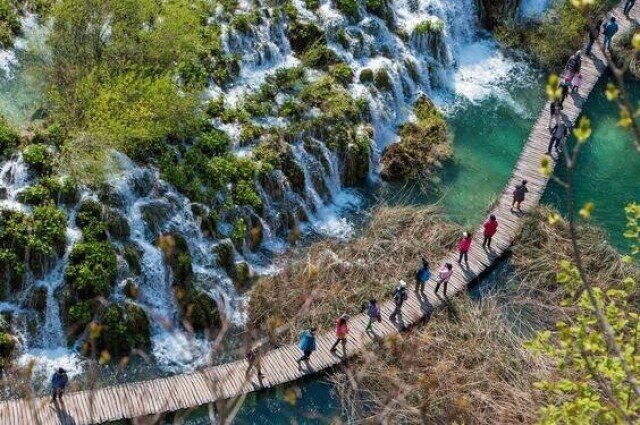Gilan province gears up to host Eid al-Fitr travelers

TEHRAN - Only a week after two waves of Nowruz travels, Gilan is poised to provide services to travelers during the upcoming Eid al-Fitr holidays as one of the most sought-after destinations across Iran.
Regarding the approaching Eid al-Fitr holidays, Gilan’s Director-General of Cultural Heritage, Tourism, and Handicrafts assured that the preparations to cater to travelers are all set.
Detailing the preparedness level in terms of hosting travelers, Vali Jahani pointed to the coordinating measures taken by Gilan’s Executive Travel Services Headquarter with an eye toward hosting holidaymakers in the best possible way.
“Necessary predictions have been made for this year’s third wave of travels during Eid al-Fitr holidays from April 10 to 12,” the official noted.
As the Nowruz holidays officially came to an end, Gilan’s governor, Asadullah Abbasi revealed some statistics concerning the two waves of Persian New Year’s travels which sheds light on the importance of readiness as the third wave is on its way.
“In the course of the Nowruz holidays, 1,643,425 vehicles entered the province,” the governor noted, “which according to the estimations carried 7,292,637 individuals.”
Abbasi also provided figures on the overnight stays across the province, outlining that 11,917,598 stays have been recorded throughout the two waves of the New Year’s travels.
The official also highlighted an 18% increase in inbound tourists with 483 individuals, who stayed in Gilan's accommodations in comparison to the past year’s corresponding time.
Moreover, 975,881 individuals visited museums, historical sites, and tourist attractions in Gilan during this period, according to the governor.
Ensuring quality service to tourists, Abbasi emphasized that hundreds of monitoring visits to tourism facilities were conducted to make sure the holidaymakers were being catered to deservedly.
Gilan is known for its tourist attractions and warm-hearted and hospitable people. The people of Gilan from different ethnic groups, including Gilak, Talesh, and Tat, have come together and formed a very rich and diverse culture and customs.
The northern region was within the sphere of influence of the successive Achaemenian, Seleucid, Parthian, and Sasanian empires that ruled Iran until the 7th century CE. The subsequent Arab conquest of Iran led to the rise of many local dynasties, and Gilan acquired an independent status that continued until 1567.
Besides, its sophisticated capital city of Rasht has long been a weekend escape for residents of Tehran who are looking to sample the famous local cuisine and hoping for some pluvial action–it's the largest and wettest town in the northern region. Gilan is divided into a coastal plain, including the large delta of Sefid Rud and adjacent parts of the Alborz range.
Leave a Comment